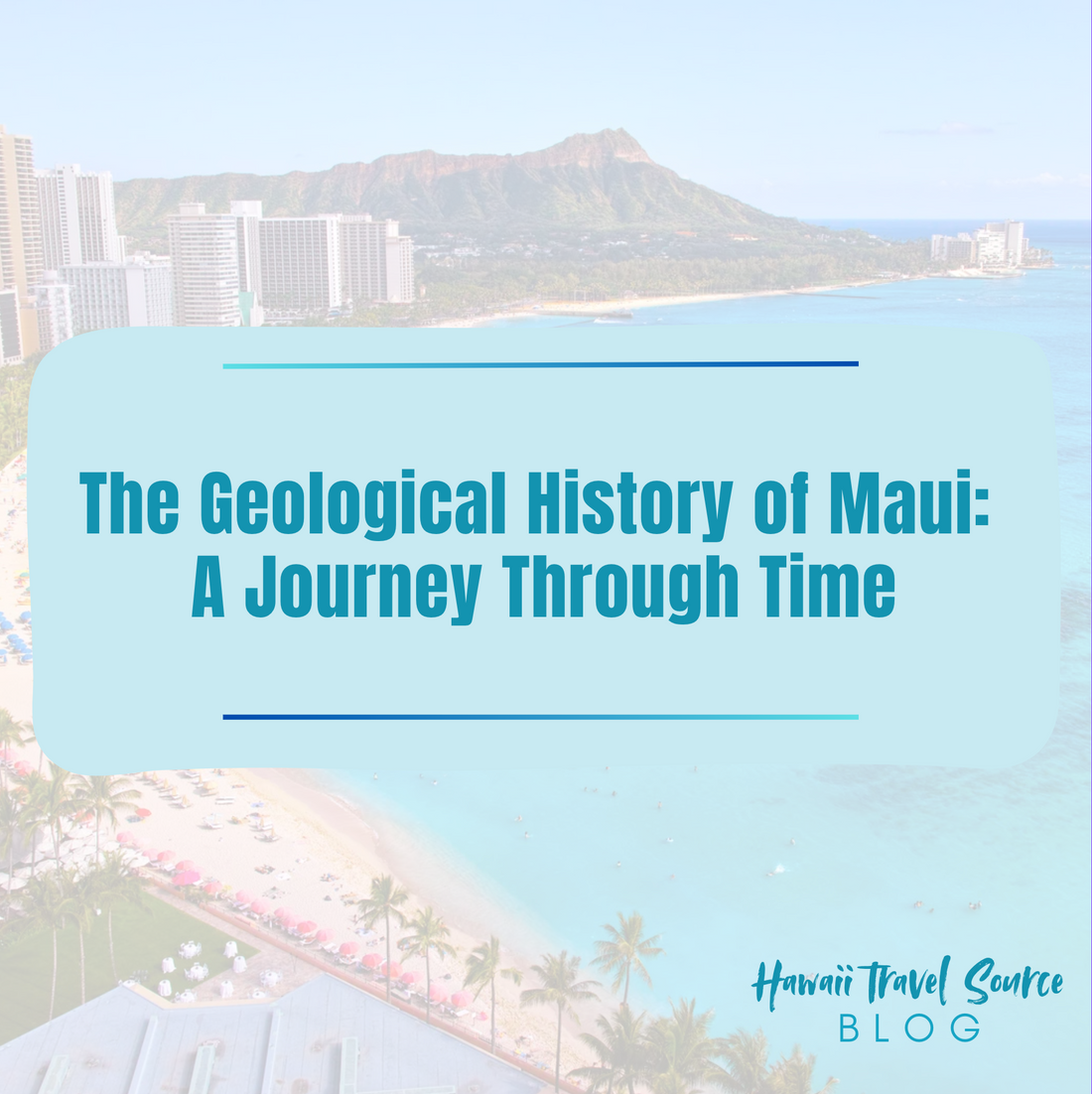
The Geological History of Maui: A Journey Through Time
Share
Maui, the Valley Isle, is not only famous for its stunning beaches, lush landscapes, and vibrant culture but also for its fascinating geological history. This Hawaiian island is a natural marvel, formed over millions of years through volcanic activity, erosion, and shifting tectonic plates. Let’s take a journey through time to explore how Maui came to be.
The Birth of Maui: Volcanic Origins
Maui's geological history begins about 1.5 million years ago, when volcanic activity first shaped the island. The island is primarily made up of two shield volcanoes, Haleakalā and West Maui (Mauna Kahalawai).
-
Haleakalā, the island’s largest volcano, is often referred to as the "House of the Sun." This dormant volcano has erupted multiple times in the past, with the last eruption occurring around 1790. It stands at 10,023 feet above sea level, making it the highest peak on Maui. The massive crater at Haleakalā’s summit, which spans over 7 miles wide, is one of the island’s most iconic geological features.
-
West Maui's volcano, the older of the two, has been extinct for about 2.5 million years. It is heavily eroded and shaped into the dramatic ridges and valleys that characterize the West Maui Mountains. The lush valleys like Iao Valley are a result of erosion from rain and wind, with steep cliffs that once formed the sides of the volcano.
Volcanic Activity and the Formation of Maui
Both Haleakalā and the West Maui volcano were formed through a series of eruptions, where molten lava slowly built up over time. Lava flows from these eruptions spread out, forming the island’s landscapes, including beaches, cliffs, and ridges. As lava cooled and hardened, it formed solid volcanic rock that makes up much of the island’s foundation.
Maui’s volcanic landscape continues to evolve even today, albeit much more slowly. The island’s position on the Pacific tectonic plate has led to constant shifts and adjustments in the Earth’s crust, contributing to its unique terrain.
Erosion and Shaping the Island
While volcanic activity was responsible for creating Maui, it is the forces of erosion that have truly shaped the island’s stunning natural beauty. Wind, water, and time have eroded the lava rock into the deep valleys, jagged ridges, and soft beaches that we see today.
Over millions of years, rainwater has carved out the valleys of West Maui and East Maui, turning the once-volcanic slopes into lush tropical terrain. The iconic Hana Highway winds through some of these valleys, offering travelers breathtaking views of waterfalls, cliffs, and the island's green interior.
The wind, too, has played a major role, especially in shaping the island’s coastal features. The eastern shore, where the trade winds are strongest, has formed beautiful beaches and rugged coastlines. Areas like Makena and Kihei feature coral reefs, which have developed over time due to the interaction of volcanic rock and ocean life.
The Future of Maui’s Geological Evolution
While Maui is not currently experiencing active volcanic eruptions, the island’s geological story is far from over. The Hawaiian hotspot, which is responsible for the formation of all the islands in the archipelago, continues to shift westward. This means that new islands, like Lo'ihi (an underwater volcano), are being formed, while older islands, like Kauai, continue to erode.
For Maui, the forces of erosion will eventually reshape the island, but it will be an incredibly slow process, taking millions of years. Haleakalā, though dormant, remains an active seismic region, and it will eventually erupt again, adding to the island's volcanic legacy.
Maui: A Living Landscape
Today, Maui's geological history is etched into every landscape—whether it’s the towering summit of Haleakalā, the lush valleys of the West Maui Mountains, or the pristine beaches of Wailea. The island's volcanic past is not just a story of how it came to be, but also a reminder of how nature continues to shape and change the world around us.
Maui’s geological story is a testament to the incredible power of the Earth and the forces of nature that continue to create and transform the land. As visitors explore this beautiful island, they are walking through a living, evolving history, where every rock, ridge, and valley tells a story of volcanic fire, water, and time.
So next time you find yourself in Maui, take a moment to appreciate not just its beauty, but the ancient forces that helped craft this stunning island.
